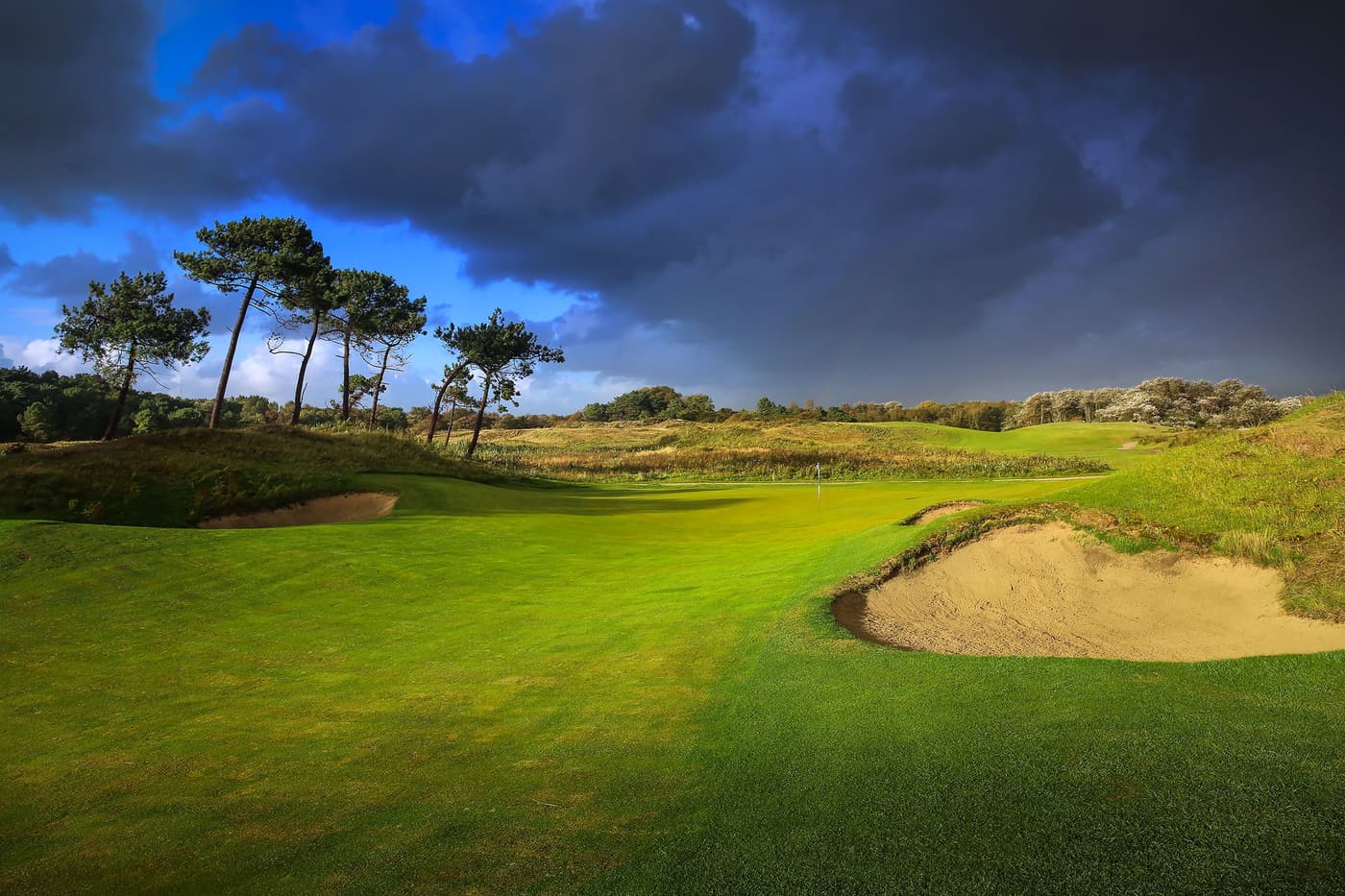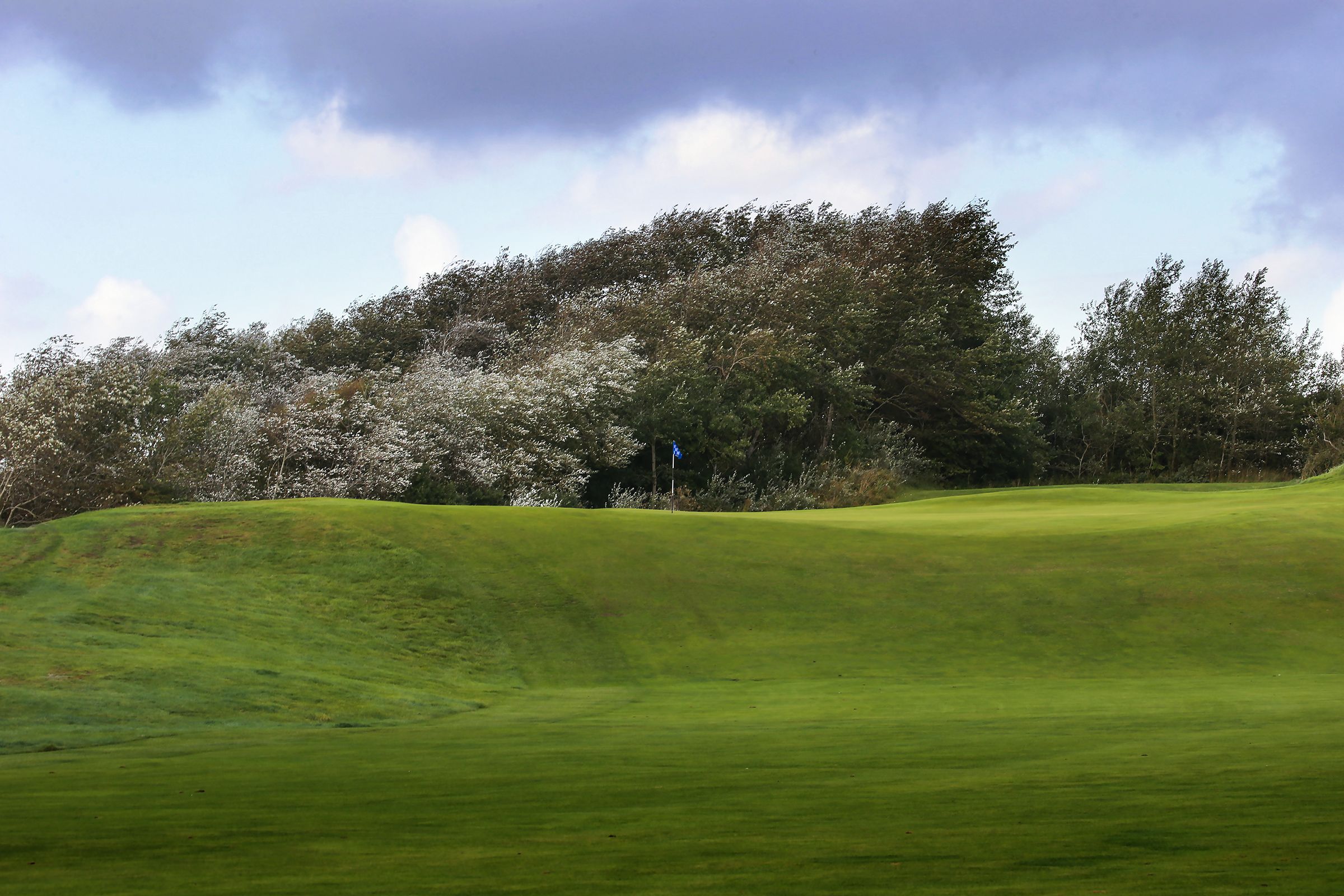
- Address2170 Av. du Golf, 62520 Le Touquet-Paris-Plage, France
- Championships hosted
Le Touquet is very French but it has strong British connections, not least because both contrasting courses at Le Touquet were laid out by British architects, but also because this was once the playground for the British gentry. Horace Hutchinson designed La Forêt and according to most modern records Harry S. Colt designed La Mer.
However, in 1936, J.S.F Morrison wrote a a column on Golf in Japan in The Bystander magazine: "Captain Alison designed the new course at Le Touquet, and was secretary of Stoke Poges shortly before the war, but he is chiefly famous for having, when representing Oxford v Cambridge, played off the roof of the clubhouse at Woking to halve the last hole in 5." Morrison was a senior partner of the design firm Colt, Alison and Morrison Ltd., so it seems La Mer could be the work of Charles Hugh Alison and Harry Colt.
In 1928 a decision was made to build a second course in the dunes and in 1930, the Daily Mail commented that this new terrain will comprise of eighteen of the most magnificent holes a scratch golfer could dream of. The new La Mer course finally opened for play in 1931 but the Prince of Wales – Edward VIII – discreetly “tried” it a few days before it officially opened. The devastation following WW2 necessitated restoration work and the course lay dormant until 1959. Harold Baker modified the layout in 1997.
The stunning seaside course, La Mer, is one of Alison's greatest achievements, and that is saying something as Alison completed many outstanding designs during his lifetime, including Hirono. Located in the Pas de Calais region, La Mer is a classic links course that winds its way between the coastal dunes and rough grasses. With wonderful sea views from elevated tees, formidable bunkering, huge dunes and fast but firm greens, La Mer is perhaps the best true links course in France and it can proudly hold its head high alongside some of its regal neighbours which lie on the opposite side of the English Channel.
Measuring 6,407 metres, La Mer is a challenging layout and has hosted six French Opens, (the most recent was in 1977 when Seve Ballesteros won the title), but it's still a seriously tough proposition, especially when the Atlantic winds funnel down the Channel and whip across this exposed links land. Sam Torrance holds the current course record with a truly remarkable 63.
Charles Debruyne from Le Touquet Golf Resort told us the following in relation to the club’s staging of the Open de France:
“The routing that is used nowadays is the original one that hosted the Open before the Second World War, designed by Colt & Alison. After the war they used a 14-hole loop (instead of 18) on La Mer, with four holes from La Forêt, allowing a start and finish at the nearby Manoir Hotel, which was being used as a clubhouse at that time.”
However, Le Touquet hasn't rested on its laurels. La Mer underwent an extensive redesign programme in 2015 which will make it a serious championship contender once more. A bridge now links the tee and green on the 10th – the par three signature hole. New tees have been added on 1st, 5th, 13th and 17th, bunkers have been added here and there and three greens have been replaced (5th, 6th and 12th). Two great hotels are attached to the golf club making Le Touquet a wonderful holiday venue.
For some reason La Mer was not listed in George Peper and Malcolm Campbell’s book, True Links, but Campbell did comment in his 1994 title European Golf Courses : “La Mer is a classic links golf course laid out among the sand dunes and might as easily be on the east coast of Scotland as on the north coast of France.”
Course Reviews
Leave a Review
This course has not been reviewed.
If you have played this course, consider .
Thanks for the review
Your review has been successfully submitted and will be reviewed for approval.
Course Reviewed
You’ve already submitted a review for this course.
Course Architect
View All
Harry Colt studied law at Clare College, Cambridge. Twelve months after his 1887 enrolment, he joined the committee of the Cambridge University Golf Club and in 1889 became the club's first captain.




